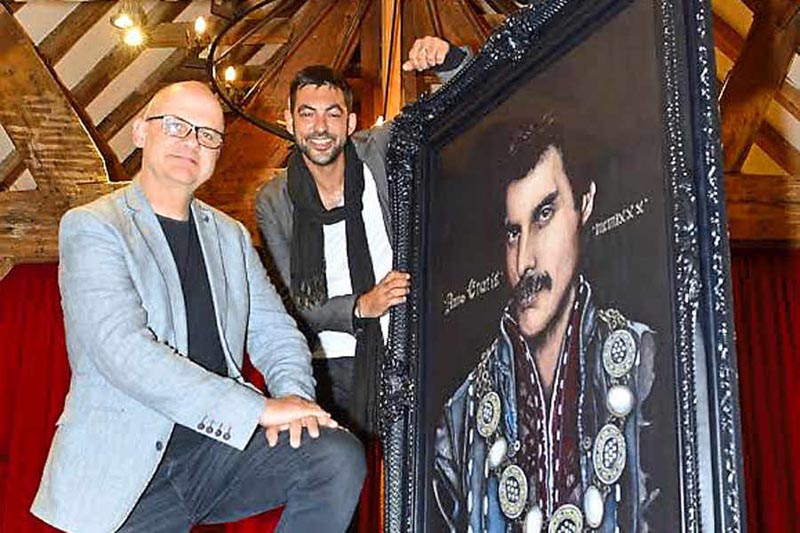SHROPSHIRE STAR
Freddie Mercury’s New-Look Portrait by Shrewsbury Artist is Unveiled
3 August 2015

He’s painted portraits of popes and archbishops and now Shrewsbury artist Adam Birch has turned his attention to Queen singer Freddie Mercury for the latest addition to a town restaurant’s collection of musical legends. The picture, which gives the star a Tudor makeover, has been commissioned by Henry Tudor House, a restaurant, bar and music venue in the centre of the town.
The walls of the restaurant already feature period-style portraits of some of the world’s most famous rock and roll names, including Sid Vicious, Amy Winehouse and Mark Bolan, as part of owner Graham Jenkins’ idea of giving the historic half-timbered building a contemporary feel.
He described the Freddie Mercury portrait as having “swagger”, adding: “It is an amazing piece of artwork. Customers absolutely love the paintings. They look so authentic that people often do a double take when they realise the subjects are famous rock stars. We are sure the Freddie Mercury picture will cause quite a stir.”
Shrewsbury artist Mr Birch, a graduate of Wolverhampton University, undertakes commissions all over the world from his studio in The Square.
He was short-listed for the final selection of this year’s international BP portrait award. He specialises in ecclesiastical work and has been commissioned to paint portraits of Pope Benedict XVI and Pope Francis and is working on commissioned portraits of the Archbishop of Westminster and the Archbishop of Luxembourg.
He said: “I am very pleased with the way the Freddie Mercury painting has turned out. I have created him in the dark and stately manner of the Tudor aesthetic and included his famous lyrics ‘I want to break free’ in Latin scripture.”
The Henry Tudor House building, situated in Barrack’s Passage, is one of the oldest, most historic medieval buildings in Shrewsbury. It is reputed to have got its name when Henry Tudor stayed at the site on his way to victory over Richard III at the Battle of Bosworth Field in 1485.